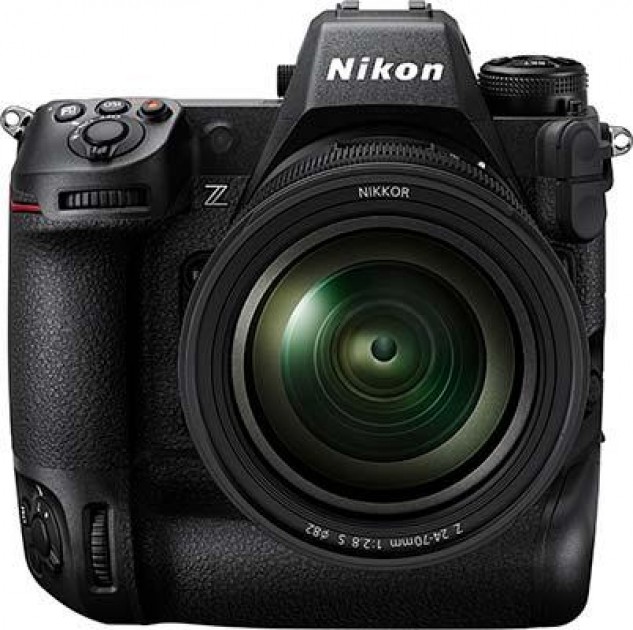
Introduction
The Canon RF 100mm F2.8L Macro IS USM is a medium telephoto macro prime lens for Canon EOS R full-frame mirrorless cameras.
It offers a minimum focusing distance of 26cm and a very impressive, class-leading maximum magnification ratio of 1.4x, surpassing the 1x magnification offered by the EF DSLR version.
It features 17 elements in 13 groups and has a Super Spectra Coating to help reduce flare and ghosting.
The Hybrid Image Stabilizer provides up to 5-stops of compensation and up to 8 stops of shake correction when used with certain EOS R camera bodies which have an In-Body Image Stabilizer (IBIS).
It has a near-circular 9 blade diaphragm which creates an attractive blur to the out-of-focus areas of the image, and there’s a brand new Spherical Aberration Control ring which changes the shape and softness of the bokeh.
An internal focusing mechanism means the lens barrel doesn’t move, and it’s also dust and moisture resistant to Canon’s L-series standards.
The Canon RF 100mm F2.8L Macro IS USM lens is available now priced at £1519 / $1399 in the UK and the US, respectively.
Ease of Use

Weighing in at 730g and measuring 14.8cm in length, the RF 100mm F2.8L Macro IS USM is just over 100g heavier and 2.5cm longer than the DSLR version of this lens that it effectively replaces in Canon’s mirrorless system, the EF 100mm F2.8L Macro IS USM (although you have to factor in the extra size, weight and cost of an adapter if you want to use that lens on an EOS R series camera).
It’s overall size is pretty big but still just about complements a mid-sized camera body like the Canon EOS R6 body that we tested it with, as shown in the product photos.
Build quality is simply outstanding. The RF 100mm F2.8L Macro IS USM feels very solid in your hand, and it features an L-series level weather-resistant design that protects against dust and moisture.
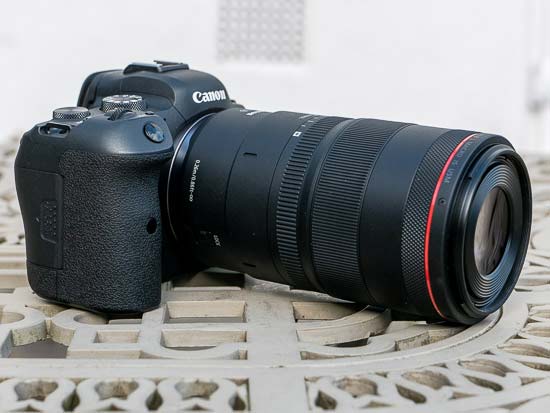
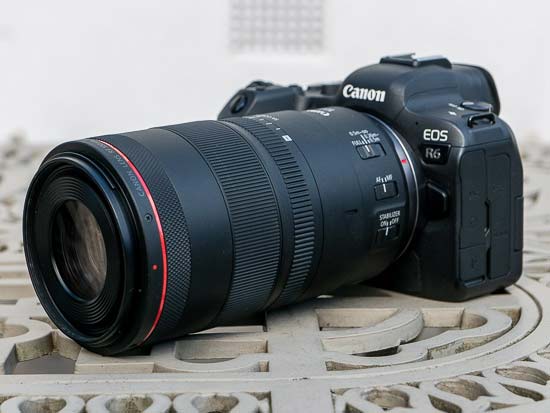
An Image Stabilizer helps to minimize the appearance of camera shake by 5 stops, or up to 8 stops of correction when paired with an EOS R camera body with IBIS.
Canon does state that “At closer focusing distances, the image stabilisation effect reduces.”, with the lens offering 2-stops at 1.0x magnification.
A new feature for certain RF lenses is the Lens Control Ring at the end of the lens barrel, which can be used to control certain key camera settings (TV, AV, ISO and exposure settings). Although not a new idea in the wider photography world, this is the first time that Canon have incorporated this idea into their interchangeable lenses.
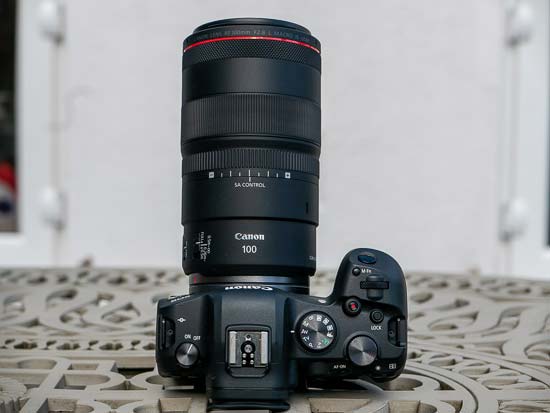
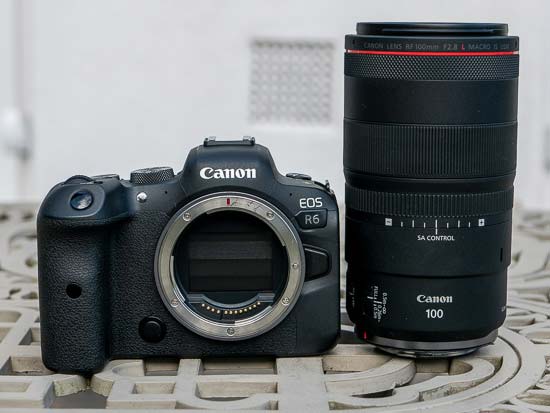
There is a focus mode switch with the usual AF/MF settings. Note that this lens usefully offers full-time manual focusing even when AF is selected.
There’s also a focus limiter switch that toggles between Full, 0.5m-Infinity and 0.26m-0.5m settings to help speed-up the auto-focusing system when required.
Brand new to the RF 100mm F2.8L Macro IS USM is the variable Spherical Aberration Control ring, which can be used to adjust the look of the lens’ bokeh whilst simultaneously applying a soft focus effect.
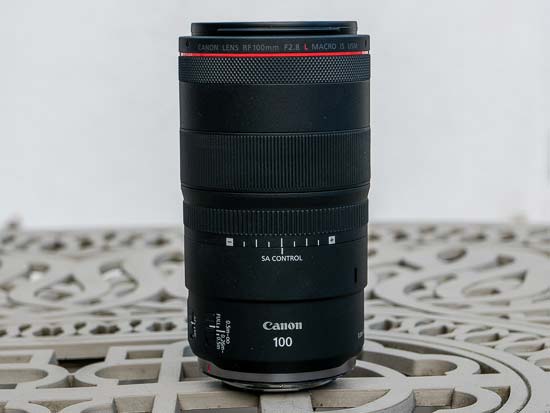
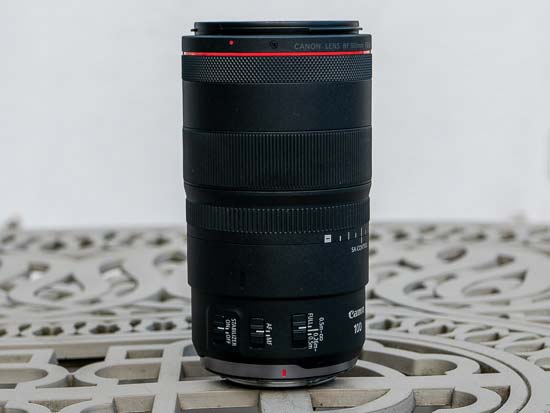
The effect is shown in the viewfinder and the LCD screen, so you can preview the effect of changing the setting in real-time. It also has its own Lock button on the bottom right of the lens barrel.
The Canon RF 100mm F2.8L Macro IS USM lens has a generously sized, fly-by-wire focus ring with a ridged, rubberised grip band. There are no hard stops at either ends of the range, making it more difficult to set focus at infinity.
The focus throw is large enough to allow for more precise manual adjustments when shooting macro subjects.
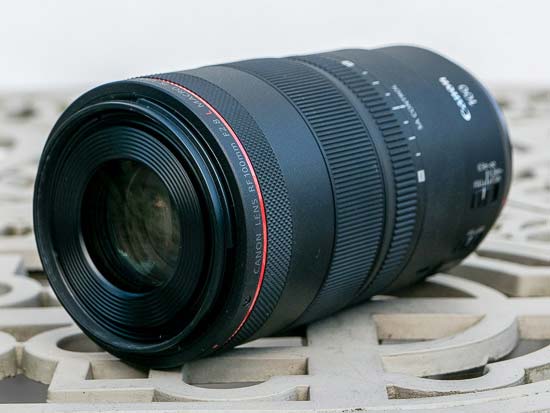
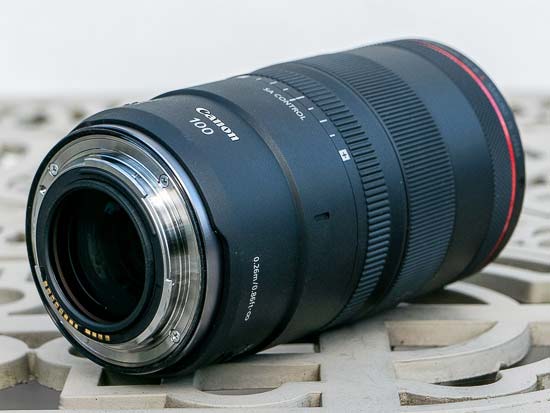
Note that manual focus override is not available when this lens is set to AF. Instead you can set the camera to either One Shot or One Shot Magnify in the Lens Electronics MF menu option, which then allows you to manual focus in auto focus mode when turning the focus ring while holding the shutter button down half-way.
Polariser users should be pleased that the sensible 67mm filter thread doesn’t rotate on focus.
When it comes to auto-focusing, the RF 100mm F2.8L Macro IS USM is a pretty quick performer considering just how much glass is inside it, taking around 0.15 seconds to lock onto the subject when mounted on the Canon EOS R6 camera that we tested it with.
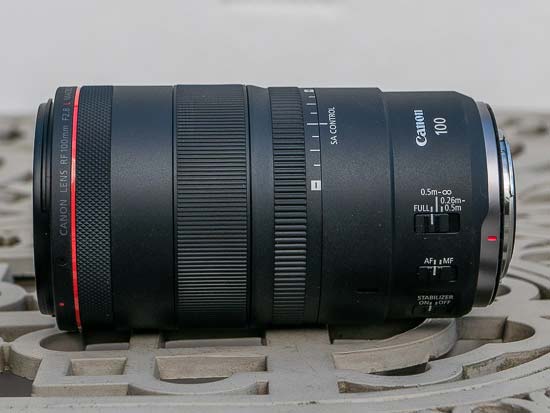
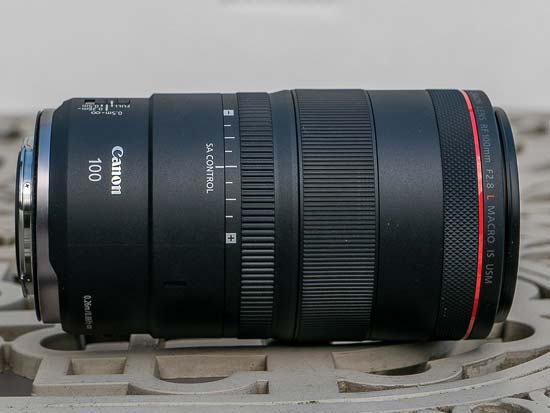
We didn’t experience too much “hunting” at all, either in good or bad light, with the lens accurately focusing virtually all of the time, thanks to the superb low-light capabilities of the EOS R cameras.
The Dual Nano USM motor is also very quiet, which makes this lens well-suited to video recording, even when quickly focusing from near-to-far.
The lens ships with a large round lens hood (ET-73C) with a lock button which locks into place when fully engaged and a soft case (LP1219). There’s also an optional rotating tripod collar available for increased support when using a tripod or monopod.

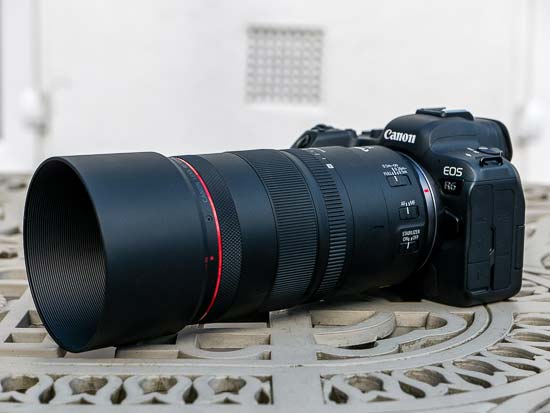
Focal Range
The Canon RF 100mm F2.8L Macro IS USM’s focal length of 100mm provides an angle of view of 24 degrees.

Chromatic Aberrations
Chromatic aberrations, typically seen as blue or purple fringes along contrasty edges, were not especially apparent in our test shots, only appearing in very high contrast areas.

Vignetting
With the lens set to its maximum aperture of f/2.8, there is some obvious light fall-off in the corners, requiring you to stop down by at least 2 f-stops to prevent it.

Distortion
There’s some very slight pincushion distortion evident in the RAW files – the Canon EOS R6 camera automatically and successfully applies corrections to the JPEG files.

JPEG

RAW
Sunstars and Flare
The Canon RF 100mm F2.8L Macro IS USM doesn’t create the nicest sunstars when stopped-down to f/22 or f/32, as shown below, although flare is at least fairly well controlled when shooting directly into the sun.

Macro
The Canon RF 100mm F2.8L Macro IS USM offers a minimum focusing distance of 26cm / 10.2″ with an impressive maximum magnification of 1.4x.






Bokeh
Bokeh is a word used for the out-of-focus areas of a photograph, and is usually described in qualitative terms, such as smooth / creamy / harsh etc.
In the RF 100mm F2.8L Macro IS USM lens, Canon employed an iris diaphragm with 9 rounded blades, which has resulted in very nice bokeh in our view.
We do realise, however, that bokeh evaluation is subjective, so we’ve included lots of examples below for your perusal.




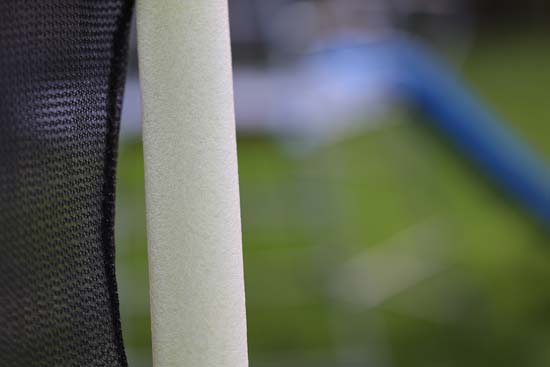

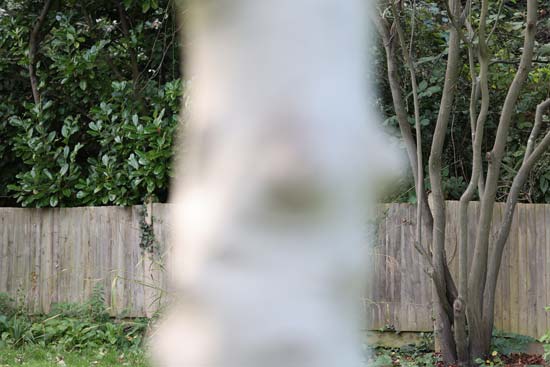
Spherical Aberration Control
The RF 100mm F2.8L Macro IS USM has a variable Spherical Aberration Control ring which can be used to adjust the look of the bokeh, whilst simultaneously applying a soft focus effect.

-VE position

0 position

+VE position

-VE position

0 position

+VE position
Sharpness
In order to show you how sharp the Canon RF 100mm F2.8L Macro IS USM lens is, we are providing 100% crops on the following page.


